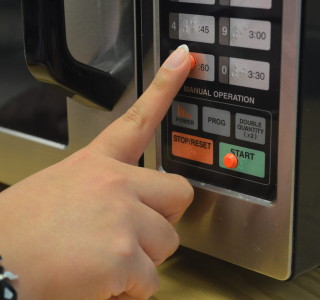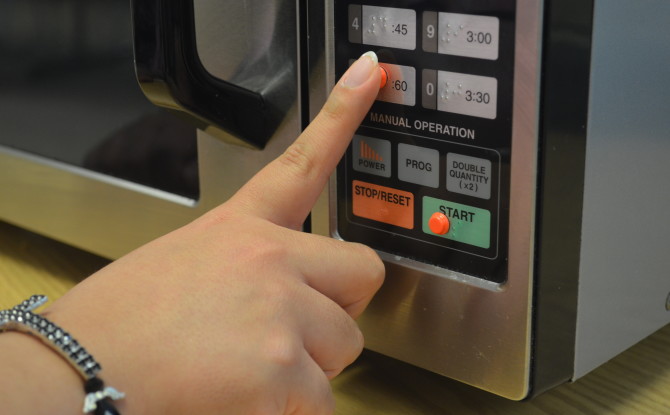
How Can People Who Are Blind or Visually Impaired Tell Different Things Apart?
August 25, 2016
I recently came across an article about Braille labels being added to beer bottles in Japan. It brought up one of the questions I often get – how do people who are blind or visually impaired tell everyday things apart without being able to see. With most things having labels only in print, we have to come up with other tips and tricks to keep them organized. Labeling and organizing methods are endless, and these are just a few suggestions to get started.
Keeping things organized
More often than not, I can tell different items apart simply by keeping them organized and in different places. Of course, I first find out what they are from someone else when grocery shopping. I know, for example, that the cereal boxes are on one shelf of the pantry, and crackers, canned food, etc. are on another. The shape and size of different packages also helps – a can of soup feels very different from a bottle of dressing. Simple things like listening to the sounds of each product also help. Shaking a box of uncooked pasta sounds very different from a box of cereal bars.
Labeling with easy to find household items
There are times when I inevitably have to label things that feel or look identical. Often, using things like tape, rubber bands, paper clips or safety pins helps. Food cans are often identical, and I have to label them as soon as I know what they are. By putting a rubber band around a can of soup, I can tell it apart from a can of vegetables. Using rubber bands on medication bottles is also very helpful when organizing them. Putting safety pins on clothing tags helps me know what color it is. This post gives more information about organizing and matching clothes as someone who can’t see.
Using Braille or large print labels
Labeling things like important documents, CDs, DVDs, etc. can be done with Braille and large print labels. The Chicago Lighthouse’s Tools for Living Store sells a variety of labeling materials ranging from special Braille labeling paper to large print stickers. Generally, I like to label things like folders, binders, CD and DVD cases in Braille. There are also other products for people who are unable to read Braille. The bump dot tactile stickers, also sold by the Tools for Living Store, are a great option for microwaves, stoves, computer keyboards and other electronics. These are sold in a variety of colors and sizes.
Assistive technology devices
There are a variety of “high tech” devices that can help people with vision loss label things and stay organized. The Talking RX Pill Bottle Recorder is a great tool for labeling medications. Other devices, like the PenFriend Voice Labeling System, can be a good alternative for organizing CD and DVD collections, medications, important documents and so on. Similar assistive devices and smartphone apps are constantly being developed.
You can see these and other products offered at the store here. For more tips on how to label and organize household items as someone with vision loss, visit this site from the American Foundation for the Blind. What other labeling methods have you found helpful as someone who is blind or visually impaired? Please share any suggestions with our readers!






